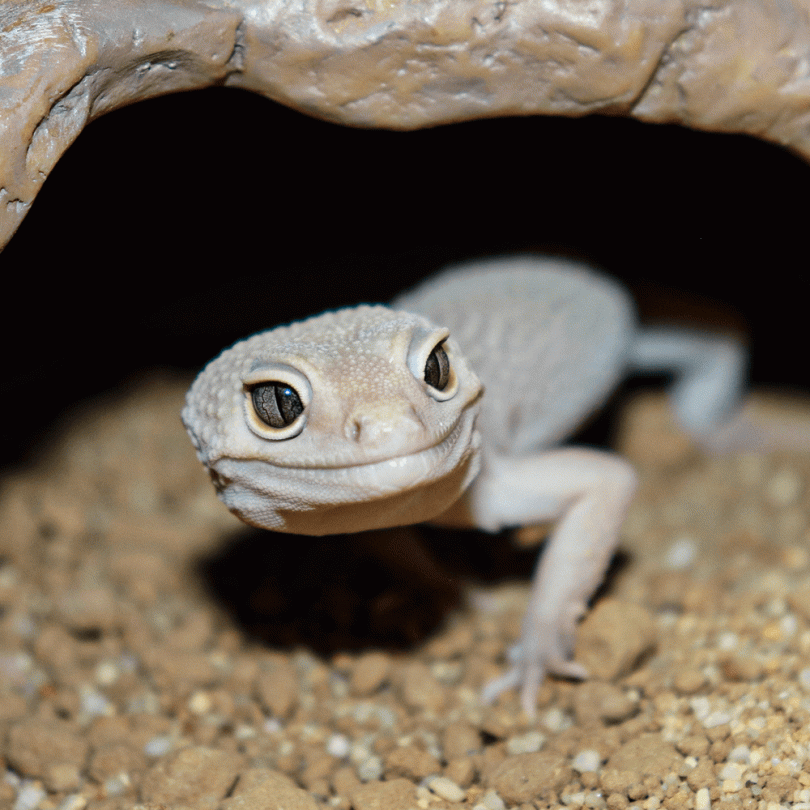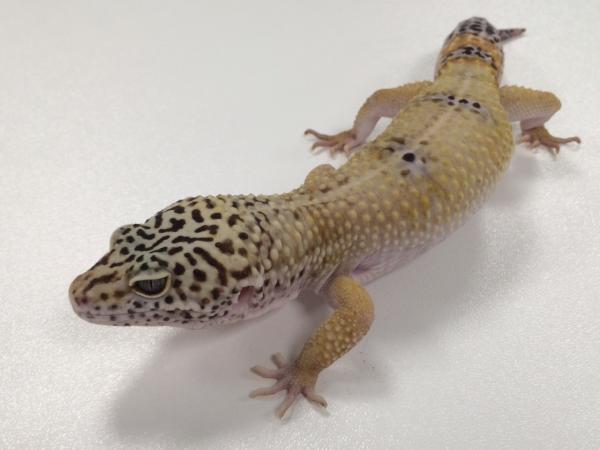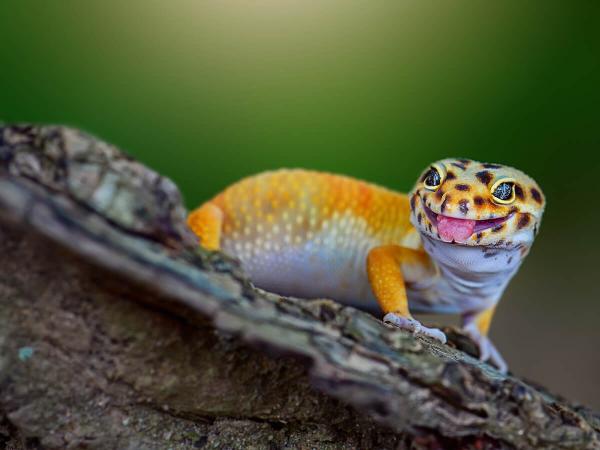-
Leopard gecko, Eublepharis macularius, heating guide
Leopard gecko, Eublepharis macularius, heating guide from the experts at Swell Reptiles, covering equipment, thermometers and thermostats. -
Categories: Care sheetsLizards
Leopard gecko, Eublepharis macularius, care sheet
Leopard gecko, Eublepharis macularius, husbandry guide from the experts at Swell Reptiles, covering housing, heating, lighting and more.
- Leopard geckos are a great beginner reptile
- Very tame and easy to handle
- Hundreds of morphs to choose from
Do Leopard geckos make good pets?
Leopard geckos are one of the most popular pet reptiles for many reasons, they are small, adorable and easy to take care of. The wild type Leopard gecko is characterised by leopard-like markings along the body, although there are hundreds of morphs on the market with varying colours and patterns, so you will be sure to find one that is appealing to you. Leos can become territorial when kept with other individuals, so should always be kept alone. All Leopard geckos at Swell Reptiles are captive bred in the UK, giving you safety in the knowledge that your gecko came from a reliable source.
Which enclosure should I choose for my Leopard gecko?
In nature, Leopard geckos can be found prowling the arid rocky grassland and desert habitats of Southern Asia, so their enclosure should be able to replicate the conditions found in these environments. Due to this, wooden vivariums generally work better due to their ability to hold heat, however, glass terrariums can also be used. At Swell Reptiles, we recommend the minimum enclosure size for an adult Leo to be 90cm (36”) long, although if you can go larger your Leopard gecko will be very appreciative.
What heating equipment do I need for my Leopard gecko?
The ideal hot spot temperature for a Leopard gecko is between 30-32°C (86-98°F), which is most easily achieved using an overhead heating system such as a heat bulb or ceramic heat emitter. All heating equipment must be connected to a compatible thermostat to prevent overheating, so if you opt for a basking lamp, you will need a dimming thermostat, or a pulse thermostat if you opt for a ceramic heater. Heat mats do not work very well in the medium-large enclosures required for a Leo, so should not be used as a substitute for an overhead heating system, and are not required when the enclosure is heated correctly from above.
As the temperature naturally drops overnight, Leopard geckos only require overnight heating if your home drops below around 15°C (59°F). If this is the case for you, you can use a non-light emitting heat source such as a ceramic heater, set to a lower temperature than during the day to ensure you are still mimicking the natural nighttime drop in temperature.
The use of an accurate thermometer is vital for Leopard geckos, to monitor the temperature in your enclosure and identify any issues with the heating equipment before it is too late. Here we recommend the Swell Digital Thermal Hygrometer.
Do Leopard geckos need UV lighting?
For a long time, Leopard geckos were believed not to require UVB lighting due to their crepuscular nature, however, this often led to geckos with deformities. More recently, research has shown that the addition of low-level UVB lighting for Leos is extremely beneficial and decreases the risk of a plethora of illnesses. Therefore, we believe it is a necessity for any Leopard geckos we have for sale, and will refuse sale on them going to a home without it.
Leos require a UVI between 1-2, which is most easily achieved using the Arcadia ShadeDweller ProT5 Kit placed 25-40cm (10-15”) above the geckos highest basking point. If the distance between the highest basking point and the light fixture will be greater than 40cm (15”), but no higher than 45cm (18”), then you will require the slightly more powerful Arcadia ProT5 Kit - Forest 6%.
Do Leopard geckos need low humidity?
Being arid reptiles, Leopard geckos have low humidity requirements with the ideal range sitting between 30-40%. Due to this, we recommend well-draining, non-moisture-retaining sandy substrates such as ProRep Leo Life, although you can also use an easily removable mat, such as the Exo Terra Sand Mat.
How do I buy a Leopard gecko?
Due to their popularity, we almost always have UK captive bred geckos for sale at Swell Reptiles, although we do not ship livestock so they must be collected from our store. If you are interested in our Leos, please pop down to see us in person.
We will perform a short interview and request to see some images of your set-up to temperature and with adequate UV lighting to ensure the animal is going to a suitable home where they can live a long and happy life.
For more detailed Leopard Gecko husbandry information, please see our Leopard Gecko Care Sheet.
| Common names | Leopard gecko, Leo |
| Scientific name | Eublepharis macularius |
| Country | Afghanistan, India, Pakistan, Iran and Nepal |
| Captive-bred | Yes |
| Adult size | 20cm (8") |
| Natural habitat | Arid, rocky grassland and desert habitats |
| Housing | 90 x 60 x 60cm (3 x 2 x 2ft) |
| Ideal temperature | 30-32°C (86-98°F) (warm end); 22°C (71°F) (cool end) |
| Ideal humidity | 30-40% |
| Diet | Insectivorous |
| Average lifespan | 10-20 years |
| Personality | Docile |
| Ease of handling | Easy |
| Cohabitable | No |
-
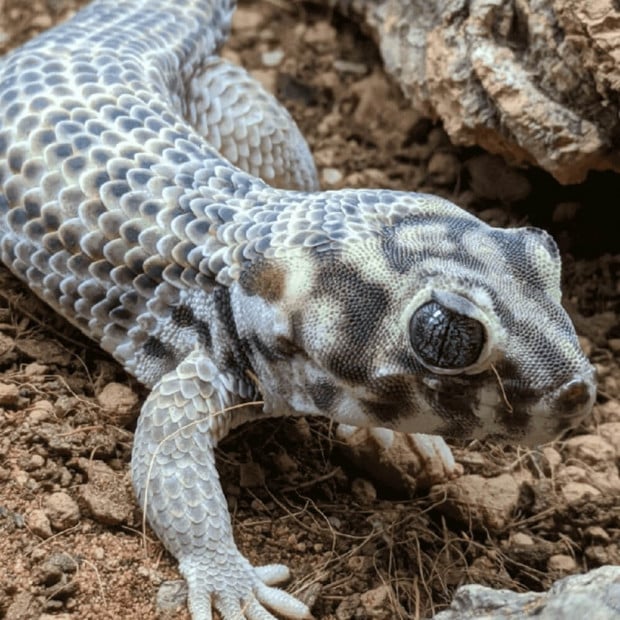 Wonder Gecko, Teratoscincus scincusFrom £55.00Out of stock
Wonder Gecko, Teratoscincus scincusFrom £55.00Out of stock -
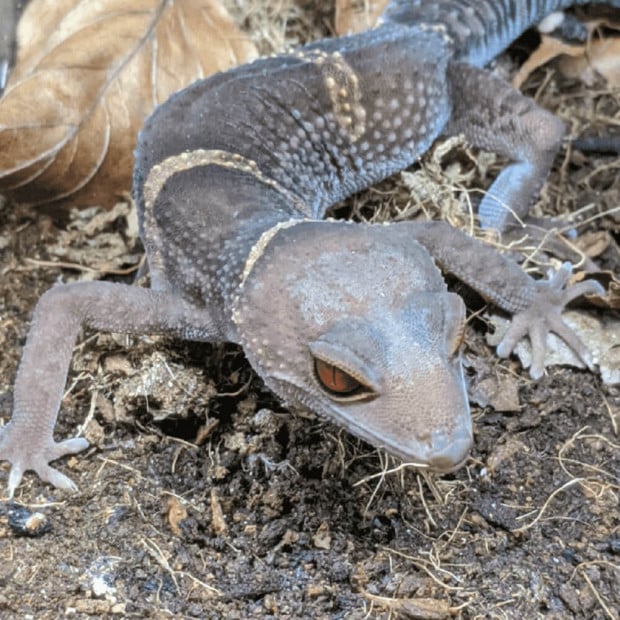 Hainan cave gecko, Goniurosaurus hainanensisFrom £75.00Out of stock
Hainan cave gecko, Goniurosaurus hainanensisFrom £75.00Out of stock -
 African fat tail gecko, Hemitheconyx caudicinctusFrom £75.00Out of stock
African fat tail gecko, Hemitheconyx caudicinctusFrom £75.00Out of stock -
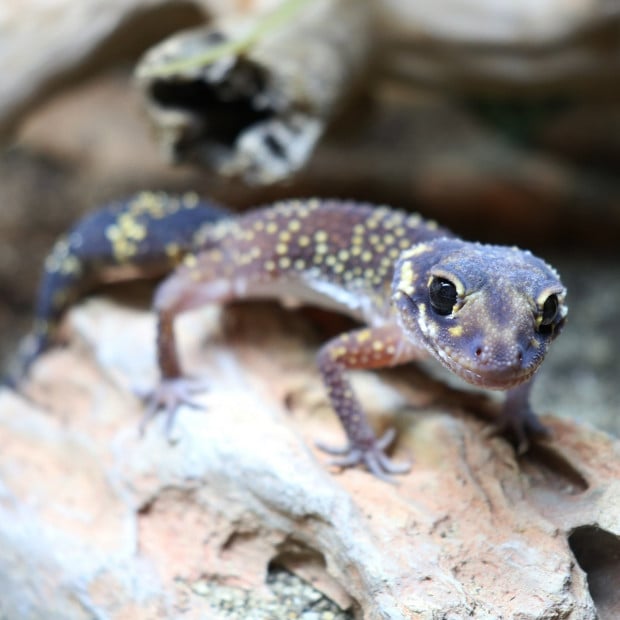 Barking gecko, Underwoodisaurus miliiFrom £100.00Out of stock
Barking gecko, Underwoodisaurus miliiFrom £100.00Out of stock -
 Dune gecko, Stenodactylus sthenodactylusFrom £35.00In stock
Dune gecko, Stenodactylus sthenodactylusFrom £35.00In stock




